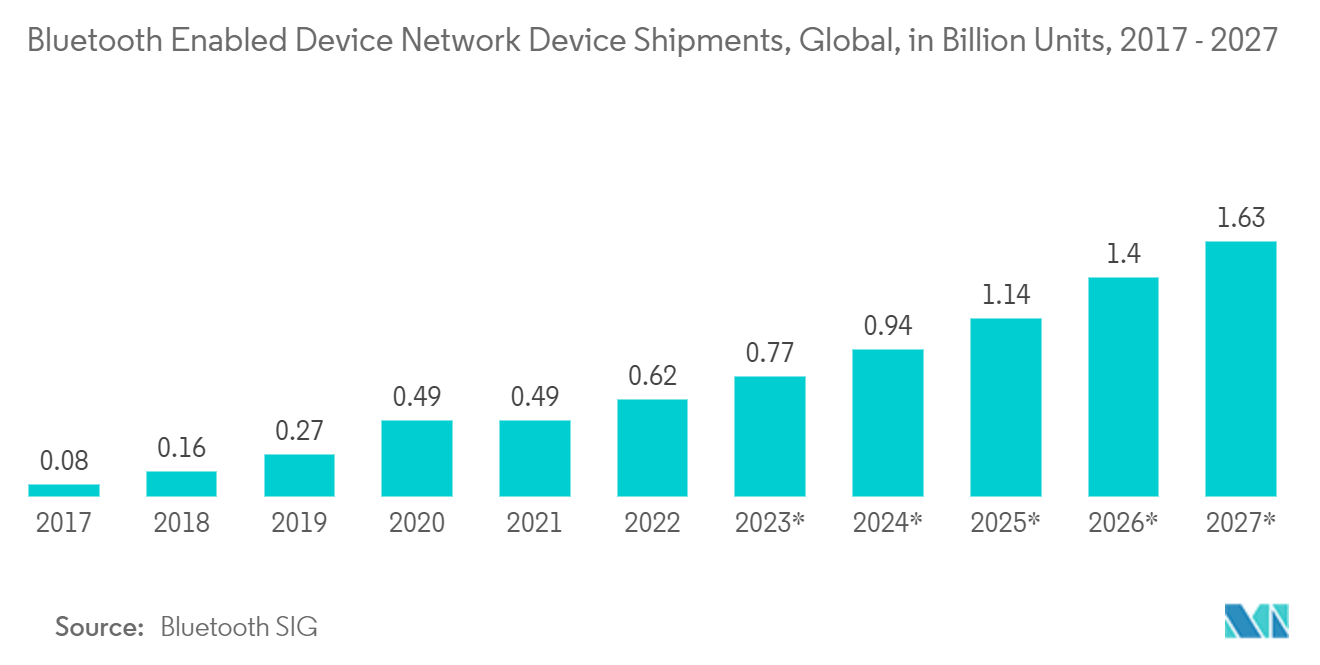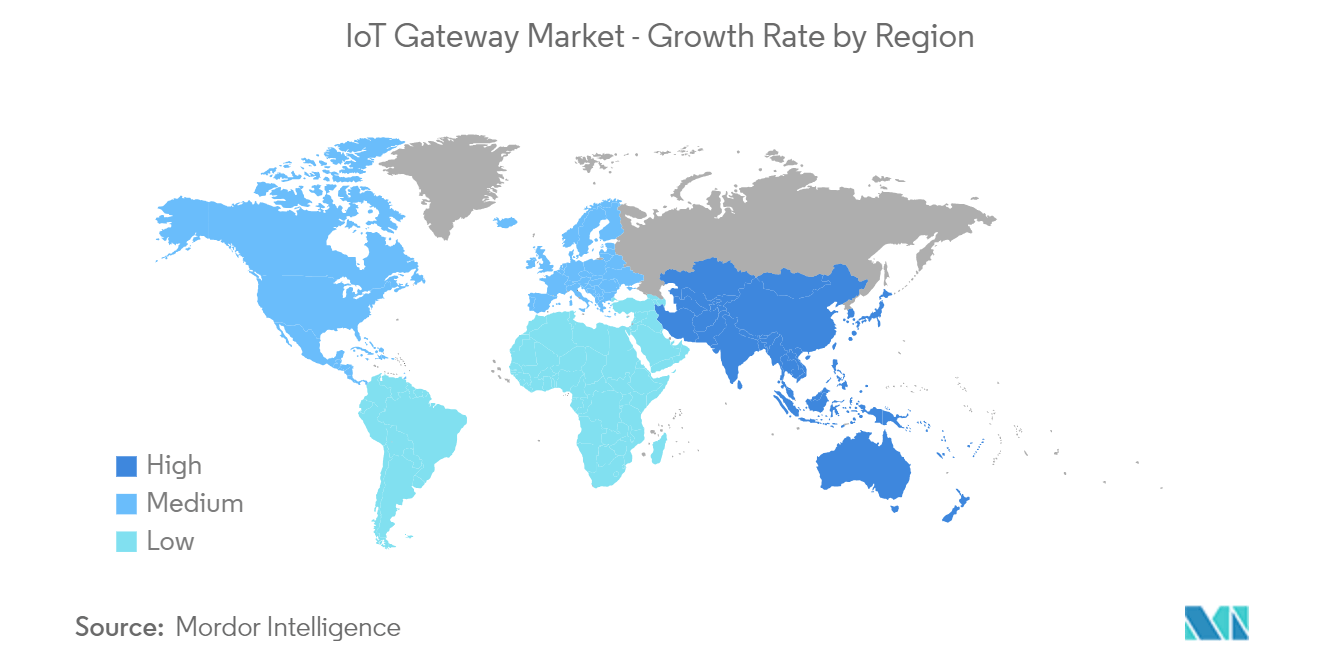Market Trends of IoT Gateway Industry
Bluetooth Segment Holds Major Market Share
- Bluetooth gateway connects Bluetooth-based products to other devices or hardware. Gateways are designed to collect data wirelessly from Bluetooth devices and then transfer it to the cloud via internet networks. Routers or gateways transmit and receive real-time data from Bluetooth BLE beacons and sensor products.
- Power consumption is among the most essential issues in short-range wireless communication technologies. Devices with high power consumption should not be used for mobile applications and should instead be used with a steady power source rather than a battery. While comparing Zigbee and BLE power consumption, BLE technology offers the lowest energy consumption.
- Further, Radio Direction Finding( RDF) and Received Signal Strength Indicator (RSSI) technologies have quadrupled Bluetooth's ability to locate devices by tracing the direction and strength of signals, which increases the acceptance of advanced Bluetooth applications into many IoT devices.
- Bluetooth connectivity has become a preferred technology of the IoT because it unlocks creative applications accelerating the future of intelligent living through smart lighting, smart healthcare, and intelligent buildings to smart cities. Additionally, according to the Bluetooth Market Update report by Bluetooth SIG, a company developing Bluetooth standards, the annual shipments of Bluetooth device network devices would achieve 2.63 times growth from during the forecast period, reaching 1.63 billion.
- The advantage of Bluetooth connectivity supported IOT gateways for IOT applications can be operated with low power consumption, which supports the market growth of Bluetooth-based IOT gateways in the market. In addition, the demand for IOT gateways in smart buildings and retail sector temperature monitoring is creating a demand for the market, including Bluetooth-enabled gateways, which is driving the market growth of IOT gateways worldwide during the forecast period.

Asia Pacific to Dominate the Market
- The industrial sector in India is rapidly adopting IoT technologies to enhance operational efficiency, reduce downtime, and optimize resource utilization. The increasing adoption of IIoT solutions is driving the demand for IoT gateways tailored to industrial applications in India.
- India's IoT ecosystem is rapidly expanding, fueled by government initiatives such as Digital India and Smart Cities Mission. The country's vast population, rising smartphone penetration, and increasing connectivity infrastructure drive IoT solutions adoption across industries. IoT gateways form a critical part of this ecosystem by enabling consistent network and information exchange between IoT gadgets and the cloud.
- Greater China is both a huge market for industrial IoT and a major supplier of component technologies, which consist of sensors, microchips, and other components that are the fabric of IoT. Also, after initially using IoT to drive efficiency improvement, Chinese manufacturers are focused on the potential for revenue growth and risk management. As a result, nations such as Thailand, Indonesia, and Vietnam are anticipated to become more vital as China shifts to more efficient generation as companies look for alternative ways to manufacture items closer to new clients within the region.
- The IoT gateway market in China is witnessing significant growth and transformation, driven by strong government support, industrial IoT adoption, and advancements in connectivity infrastructure. As China continues its focus on technological innovation and digital transformation, the IoT gateway market is expected to witness further expansion and opportunities for both domestic and international players.
- Japan has a robust technological ecosystem, with leading companies and research institutions actively involved in developing and deploying IoT solutions. The country's engineering expertise and research capabilities have contributed to the innovation and advancement of IoT gateways and related technologies.
- The rest of the Asia-Pacific region in the study considers the countries like South Korea, Australia, and Taiwan, which individually have a minor contribution. Rather, the collective contribution account for a significant share.


